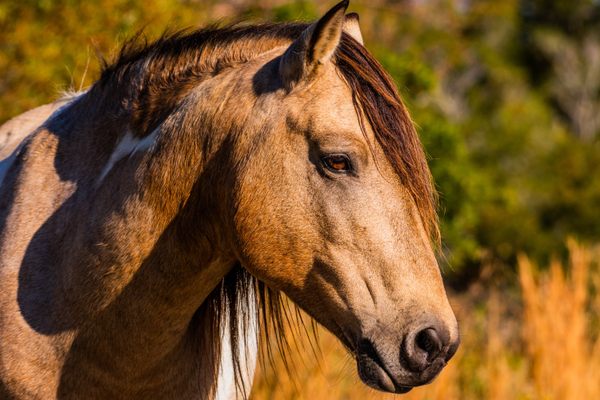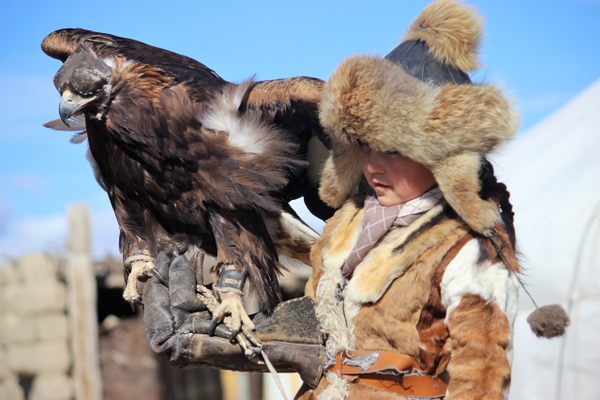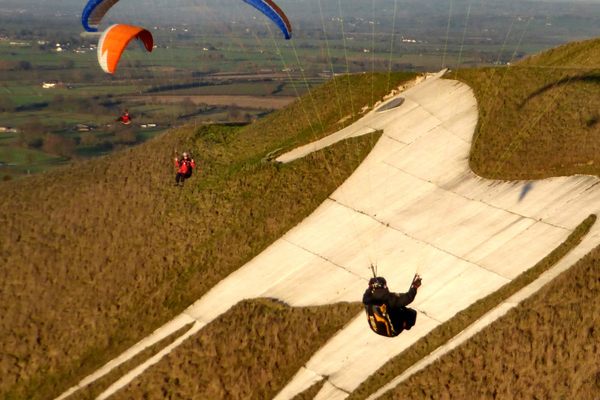Swamp Ponies: The 16th-Century Spanish Horses Still Driving Florida Cattle
A woman and her two young children run through the tall grasses of Payne’s Prairie, careful of the dozens of crickets that scatter out of their way, and wary of the snakes that can stretch up to 10-feet long or more. Sometimes they catch a glimpse of an errant buffalo, and when the rains come, the cranes, heron, and egret turn the 22,000-acre Florida State Park into a birds’ paradise, in which another 270 feathered species crowd the trees and low-lying marshland. More often than not, the wild lands are home to warthogs and alligators, but on this day, Jackie Monck and her kids are looking for the swamp ponies.
Known officially as Florida Cracker Horses, the swamp ponies originate from the 1500s when the Spanish brought them over in an attempt to herd cattle in the densely bogged Florida swamps. When the settlements proved unsuccessful, the people returned home, but they left behind their horses. From there, the animals evolved through natural selection, becoming even smaller and more nimble. Their penchant for hard-work and their spirited tenacity make them a favorite for the few ranchers left in Florida today, many of whom prefer their Crackers over any other breed.
Iris Wall is 85 years old and a devout rancher in Indiantown, Florida. With 1,200 acres at her disposal, she herds and pens her 250 head of cattle as her family has done for generations before her. For her, there is no life beyond the mud and the swamp, and the Cracker cows and horses (and a few hogs, of course).
“We round up our cows just like we always did with the horses,” she says. “My grandson tried to get me one of them there cell phones, and I swear I lost it the first week. If I get bogged down out there, I just walk on out to the road and hitch me a ride home. The horse knows its way back.”
Iris and her kin are known as Crackers because of the cracking sound made by the herders’ whips. Their horses are smaller than average, with a more understated mane and crest, but Cracker Horse owners say the best way to tell one from another breed is by riding.
“They’re real agile and small, and they can outlast other horses,” says Micanopy rancher Jack Gillen. “They can go all day. They’ve got a nice, smooth, fast walk.”
Iris adds: “They got a real pretty old head, and they watch a cow, and they’re tough. When a Quarter Horse will give up, the Cracker Horse keeps going. In this climate, they’re resistant to heat and insects.”
And the Cracker Horses prove their merits year after year at the Cracker Trail Ride, which takes place the last week of February. The ride spans 110 miles across the Florida terrain, starting east of Bradenton and ending in Fort Pierce a week later. Iris has completed the ride eight times on her Cracker Horse, Abraham.
“It’s a trail they used to herd the cattle across,” she says. “A lot of times they bring the horses in from Kentucky or Tennessee where the climate is not the same, and those horses just give out during the ride. They’re just not used to the humidity here.”
Jack and Iris belong to the Florida Cracker Horse Association, which started in 1989 when the Cracker Horses were in danger of dying out. The hardship of the breed began back in the 1930s, when the Great Depression spawned government relief programs to incentivize the importation of cattle and horses to Florida from the Midwest. The Quarter Horses are a bigger, stronger breed, but they brought screwworm, which changed the way ranchers herded. While the Cracker Horses excel at penning free-range cows in this rough terrain, with new diseases and regulations, the ranchers had to start fencing the heads in. The Cracker Horse subsequently lost its working value and the breed became muddied with the Quarter Horse line. The Association started with just 31 horses on the registry but are now up to more than a thousand.
Rancher and breeder Bobby Hall is one of the Association’s founders. He’s got more than 50 Cracker Horses in addition to 300 head of cattle. He says the more frequent use of Florida’s highways forced ranchers to start penning their herds.
“Before, the cattle were on the highways and everything. A lot of the cows liked to bed up on the roadways because it’s higher and keeps the mosquitoes away. And that started causing a lot of wrecks.”
Like the others, he prefers the Cracker Horse for roping his cattle.
“You can ride them all day, and it don’t feel like you been run over by a semi-truck,” he says. “To me, the Cracker Horse has the ride of a Cadillac, and they’re very good working horses because they have so much endurance. They’ll be going in the afternoon and a lot of the Quarter Horses will give out by noon.”
For Jackie and her children, though, it is enough to be able to amble through the prairielands in search of the friendly, active swamp ponies, frolicking near the tepid marshes and bogs of Florida’s natural terrain.
“They breed out here in the wild,” Jackie says, “and yet they’re tame enough to let you go right up to them. Pet them. Feed them. They are majestic.”
Iris laments the fall of Florida’s open swamps and prairies where this scene was a common occurrence.
“If there is a wild herd, it’s not really wild,” she says. “It’s in somebody’s casher, or on state land. We’re too inhabited now.”
But state preserves like Payne’s Prairie and their population of wildlife, including the free-roaming, free-breeding swamp ponies, are reminders that no matter how civilized people attempt to make the natural habitat of this southern state, nature is right there, ready and waiting to spring to life at the slightest opportunity. The suburbs and cities of northern Florida are there because nature permits it. They work around the environment, unable to change it significantly. Or as Iris says:
“Put a house on a swamp, and it’s still a swamp. Now it’s just got a house on it.”



















Follow us on Twitter to get the latest on the world's hidden wonders.
Like us on Facebook to get the latest on the world's hidden wonders.
Follow us on Twitter Like us on Facebook